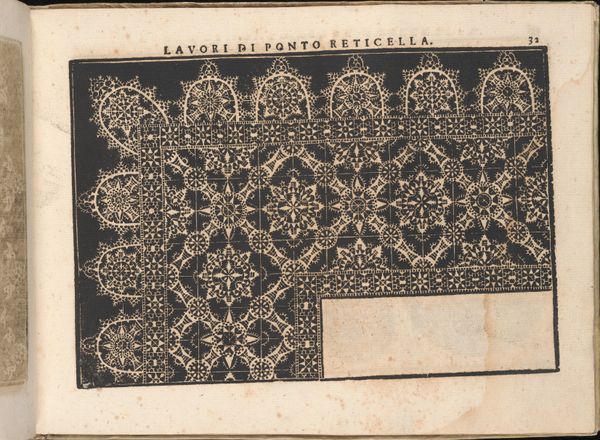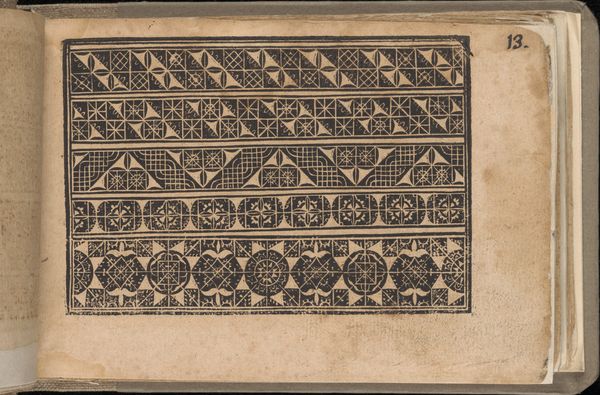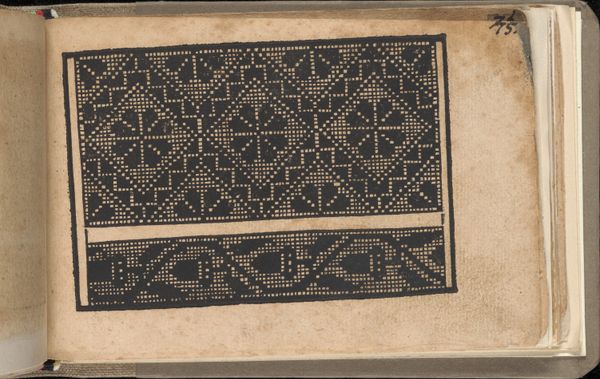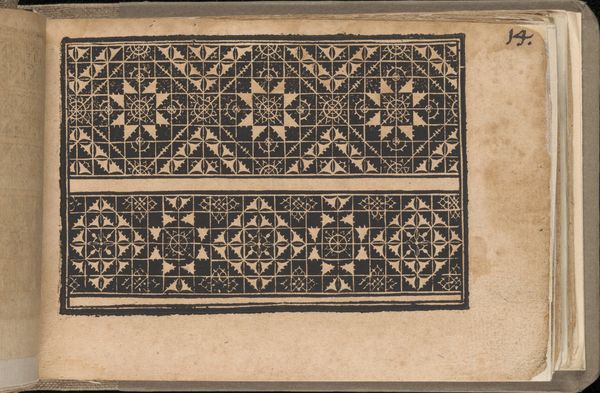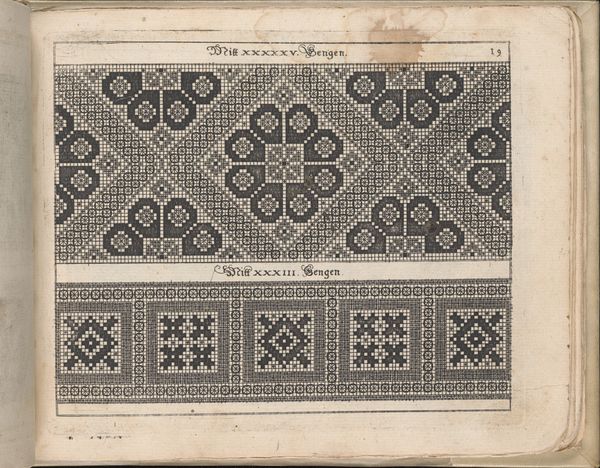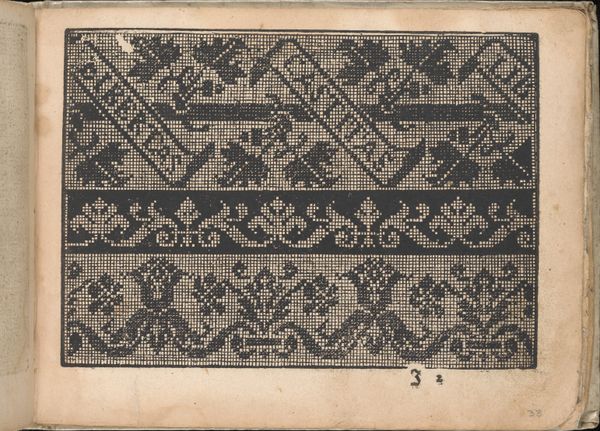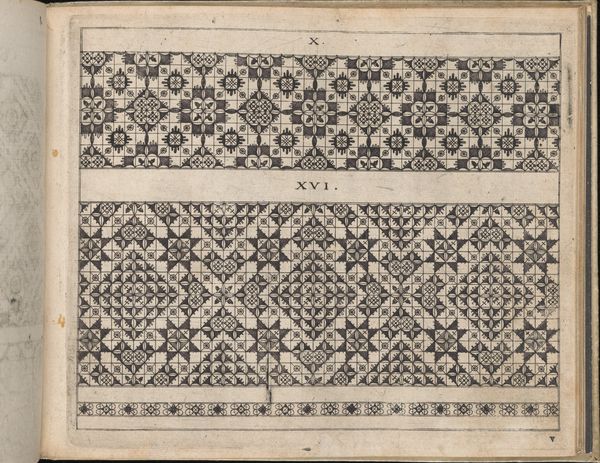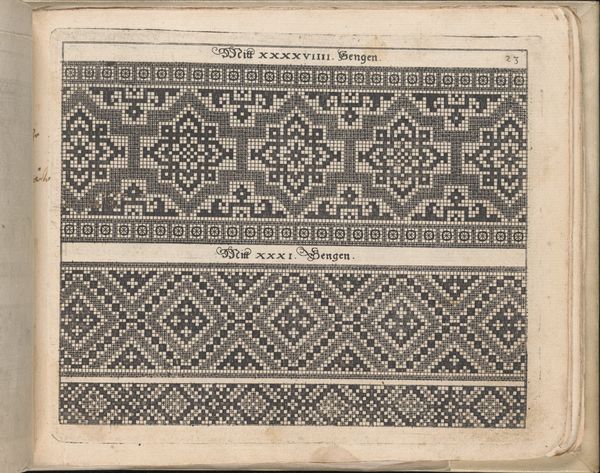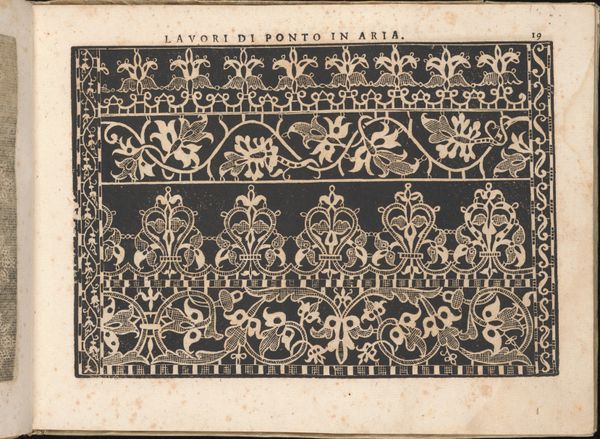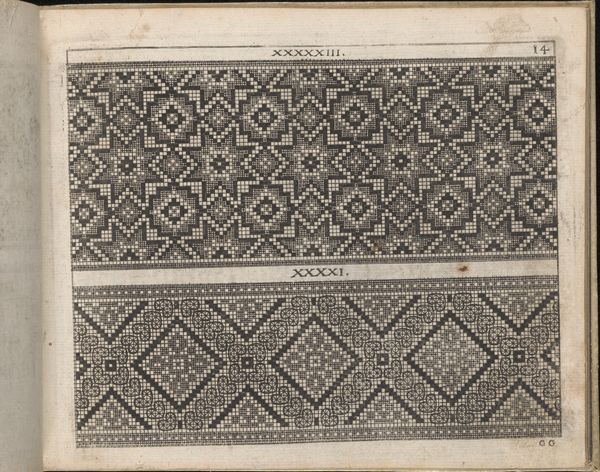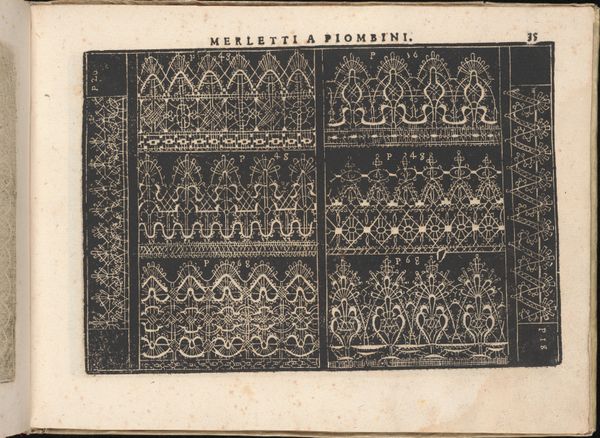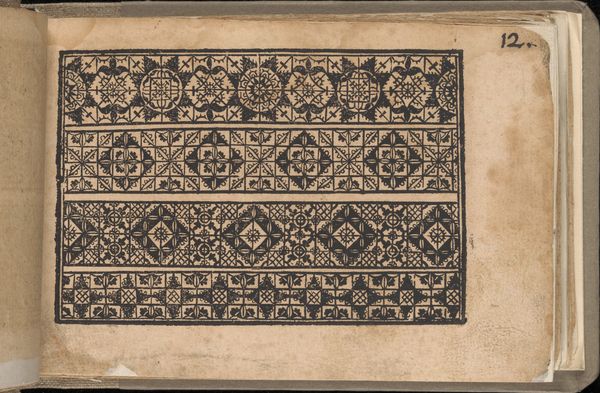
Fiore D'Ogni Virtu Per le Nobili Et Honeste Matrone, page 27 (recto) 1610
0:00
0:00
drawing, graphic-art, ornament, print, paper, ink, engraving
#
drawing
#
graphic-art
#
ornament
#
ink paper printed
# print
#
book
#
paper
#
ink
#
geometric
#
pen work
#
italian-renaissance
#
engraving
Dimensions: Overall: 7 7/8 x 10 1/4 in. (20 x 26 cm)
Copyright: Public Domain
Curator: At first glance, this feels surprisingly modern! Like a textile sample. Editor: Indeed. What we’re looking at is a page from Isabella Catanea Parasole’s "Fiore D'Ogni Virtu Per le Nobili Et Honeste Matrone," created around 1610. The Met houses this particular print, an engraving in ink on paper. Curator: Parasole. An interesting character in and of herself; her very existence and success challenges the male-dominated narrative of art at the time. What strikes me most is the stark contrast, almost aggressively so, and the repetitive, grid-like structure. What do you make of its imagery? Editor: The geometric framework, in a checkerboard of various florets and abstract forms, hints at the very specific purpose these books had in noble society. The title suggests as much. “Flower of All Virtue for the Noble and Honest Matrons." I see symbols of domesticity and skill but, above all, order. Curator: It feels deeply pedagogical, aiming to structure and discipline female artistic output, doesn't it? Remember, lace-making and embroidery weren’t just hobbies; they were economically vital skills. And for noblewomen, demonstrations of status. This book isn't simply instructional, it's defining a very specific role in early modern society. Editor: Absolutely. You can see the modular aspect as a guide—a series of possibilities, organized so a needleworker could choose different elements to build patterns and project a certain symbolic persona, based on her virtue, honor and status. Each motif speaks to the careful, constrained self-presentation expected of women in that period. The flowers, too, carried symbolic meaning that readers then would be instantly familiar with. Curator: It is hard, though, not to read it through a contemporary lens, as if it’s critiquing something. In any case, there's much to appreciate about the piece itself: The incredible precision in the lines, the level of reproduction considering the technology of the time… It's a testament to the enduring allure of ordered beauty. Editor: Indeed. And hopefully it reminds us of the lives, both constrained and empowered, of the women for whom it was intended. The designs carry the weight of a culture eager to confine female talent while also celebrating its output, so long as it stayed within bounds.
Comments
No comments
Be the first to comment and join the conversation on the ultimate creative platform.
